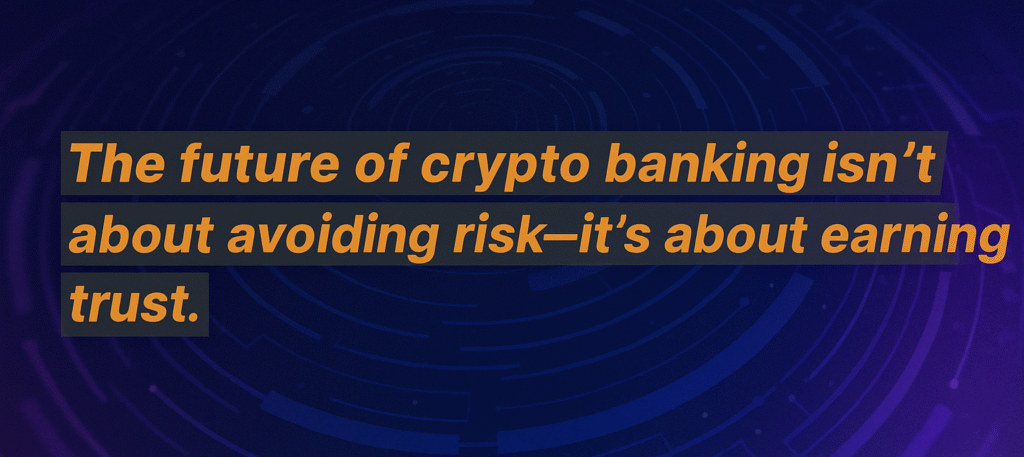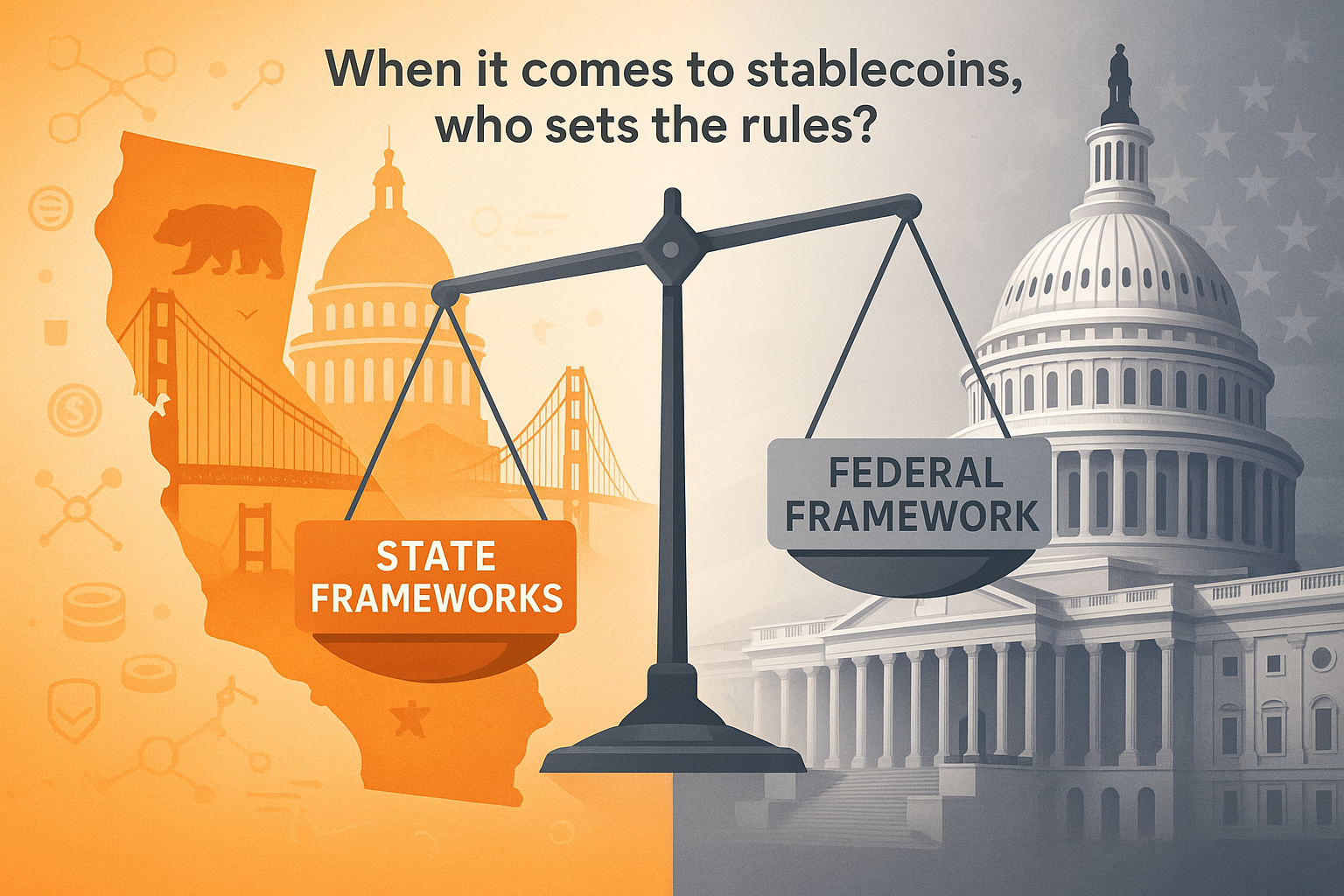As traditional banks retreat from crypto, a new wave of compliant partnerships is redefining what banking access looks like
For much of the past decade, crypto businesses have lived with one persistent threat hanging over their heads: debanking—the sudden, often unexplained loss of access to essential banking services.
It’s a problem that can cripple even the most compliant company. One day you’re paying vendors and processing payroll; the next, your accounts are frozen with little explanation beyond “risk review.”
Traditional banks have long viewed the crypto sector with caution, citing AML, KYC, and reputational risk. Post-2023, as regulators tightened scrutiny following high-profile collapses and enforcement actions, that caution turned into full-scale retreat. Some major institutions quietly severed relationships with exchanges, wallet providers, and even blockchain startups.
But the tide is beginning to turn.
While some doors are still closing, new ones are opening. A new generation of banks and fintechs are beginning to recognize that crypto doesn’t have to be a compliance liability—it can be an opportunity.
Why Debanking Happens — and What’s Changing
To understand where we’re headed, it’s worth revisiting how we got here.
Debanking didn’t happen by accident. It was born out of fear and uncertainty—fear of regulatory backlash, uncertainty about how to evaluate crypto risk, and a lack of clear standards for compliance. Banks faced enormous pressure to “de-risk” entire sectors rather than manage risk case by case.
At the same time, the perception of crypto as inherently high-risk made it easier for compliance departments to default to “no.” Combine that with headlines linking digital assets to fraud and volatility, and the calculus was simple: avoid the headache altogether.
Yet the conversation is shifting.
New frameworks—like FinCEN’s updated guidance, the California DFAL, and emerging federal proposals for stablecoin and digital asset oversight—are beginning to define clearer compliance expectations. Crypto firms are more sophisticated than ever in implementing AML programs, independent audits, and licensing regimes.
As Joe Ciccolo, Founder & President of BitAML, notes:
“We’re starting to see the pendulum swing back. The conversation has shifted from ‘avoid crypto’ to ‘understand crypto risk.’”
In other words, the industry is moving from rejection to risk management—a mindset shift that changes everything.
Emerging “Crypto-Friendly” Banking Models
Not all banks are walking away. Some are quietly walking back in.
Across the U.S., regional and community banks are stepping up to fill the gap left by larger institutions. They’re taking a more nuanced approach—treating crypto clients as partners in innovation rather than compliance headaches.
Many are partnering with fintechs and compliance specialists to serve digital asset businesses safely. For example, a bank may handle custody or payments infrastructure while a fintech partner provides transaction monitoring, blockchain analytics, or KYC solutions. Together, they build a compliant bridge between traditional finance and the crypto economy.
Internationally, progress is even faster. Banks in Singapore, Switzerland, and parts of Latin America are pioneering integrated crypto services—from custodial accounts to stablecoin settlements—supported by clear regulatory frameworks.
For crypto firms, that’s encouraging news. The banking landscape isn’t shrinking; it’s reshaping. Those willing to prove compliance readiness can still find—and build—banking relationships that last.
Compliance as the Bridge, Not the Barrier
It’s tempting for crypto firms to see compliance as the obstacle keeping them from banking access. In reality, it’s the bridge that makes those relationships possible.
Banks aren’t just evaluating your product—they’re evaluating your program. Firms that can demonstrate documented AML frameworks, ongoing monitoring, and regulatory literacy stand out from the crowd.
To rebuild trust with banking partners, crypto firms should:
- Keep compliance documentation current, including risk assessments, policies, and SAR logs.
- Maintain transparent communication with banks about business models and risk exposure.
- Undergo robust independent audits or certifications to validate program effectiveness.
These aren’t just best practices—they’re relationship currency. As we like to say at BitAML:
“Compliance = Relationship Currency.”
A strong compliance culture doesn’t just reduce risk; it opens doors.
Next On-Ramp: Crypto Banking 2.0 Highway
A new generation of banks is rethinking crypto—not as a threat,
but as an opportunity
The next phase of crypto banking won’t look like the old one. It will be smaller, more selective—and, ultimately, more sustainable.
Expect to see a new wave of banks cautiously reentering the crypto market, particularly those already serving fintechs and money services businesses. These early adopters understand that with the right oversight, crypto clients can be managed safely and profitably.
At the same time, innovation in payments—especially stablecoin settlements and real-time rails—will push banks to adapt faster. As cross-border transactions increasingly flow through blockchain rails, financial institutions that ignore digital assets will risk being left behind.
For crypto businesses, preparation is everything. Build a multi-bank strategy, strengthen internal compliance operations, and keep pace with evolving FinCEN, FDIC, and state-level guidance. The companies that invest in readiness today will have a front-row seat in the next chapter of crypto banking.
For banks and credit unions, the opportunity is just as real. Those that learn to assess, rather than avoid, crypto risk will lead a maturing market—and attract a growing share of responsible, well-run clients.
As Joe Ciccolo summarizes it:
“Crypto firms that prioritize compliance and transparency will be first in line for the next generation of banking relationships.”

From Rejection to Reinvention
The debanking era exposed a serious trust gap between crypto innovators and traditional finance. But it also paved the way for a reset.
“Crypto Banking 2.0” isn’t about forcing banks to embrace risk—it’s about rebuilding relationships through clarity, transparency, and shared standards.
Access to banking isn’t just a business need; it’s the foundation for responsible innovation.
As regulators, banks, and crypto firms learn to collaborate instead of retreat, we’ll see a more resilient, integrated financial system—one that rewards compliance, not punishes it.
Banking access shouldn’t be a mystery—or a moving target.
BitAML helps crypto businesses strengthen compliance programs, prepare for banking relationships, and build the documentation and transparency banks look for. Book a discovery call with BitAML and let’s make your next banking conversation one that stands out.


